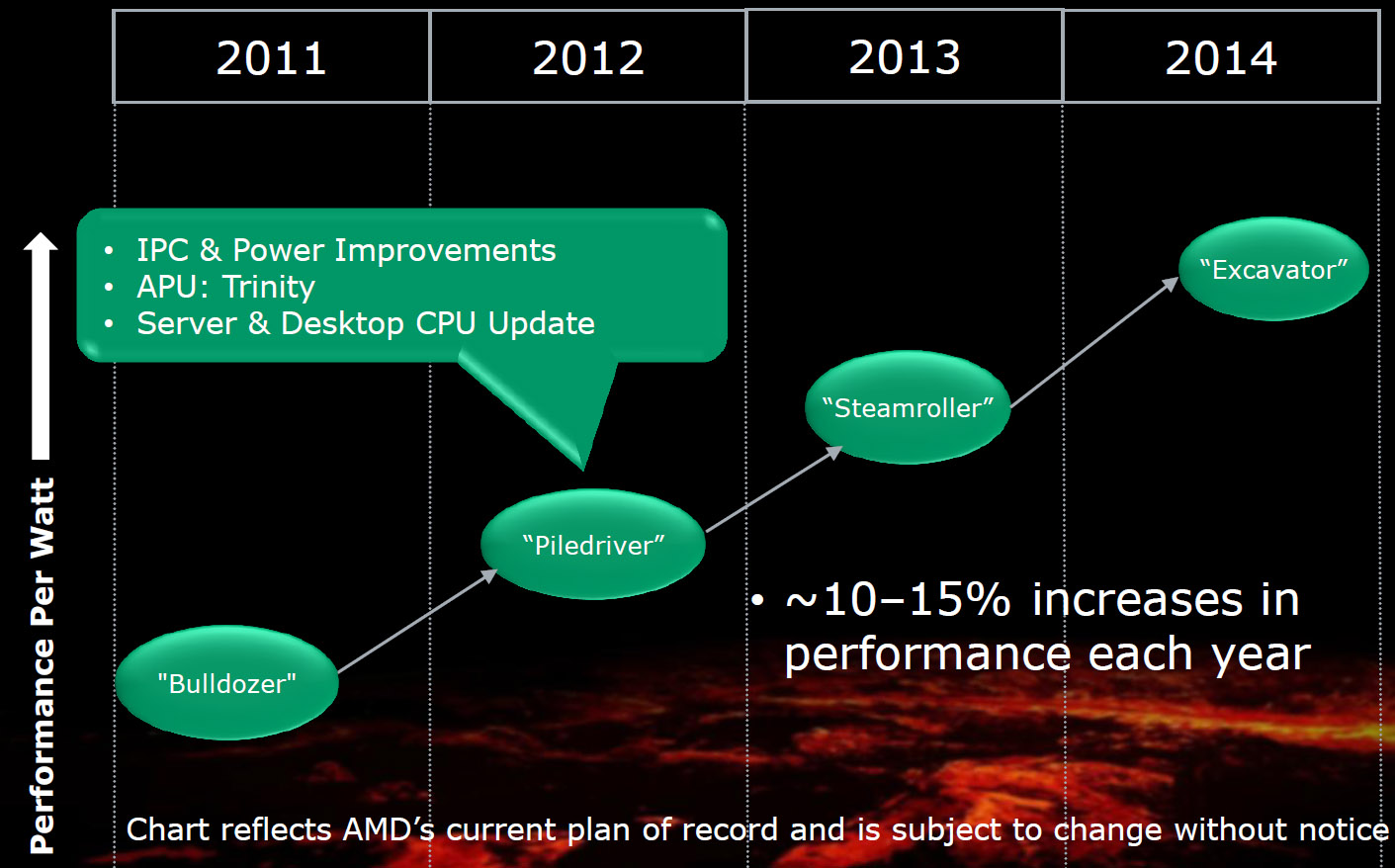AMD Bulldozer Review: FX-8150 Gets Tested
Perhaps the most hotly-anticipated launch in 2011, AMD’s FX processor line-up is finally ready for prime time. Does the company’s new Bulldozer architecture have what it takes to face Intel’s Sandy Bridge and usher in a new era of competition?
AMD’s Roadmap Through 2014
Based on where Bulldozer sits today, it’s fairly evident that AMD didn’t realize the breadth of its goals for this architecture. However, the company says it’s on a cadence to produce a new version of the Bulldozer core every year.
Bear in mind that this isn’t a cadence in the same sense as Intel’s, where AMD is committing to a major architectural revision, a manufacturing node advancement, then another architectural revision. Rather, it’s simply predicting a 10 to 15 percent performance increase per core with each successive step via a combination of IPC, power, timing, and frequency increases.
In 2012, the company plans to launch Piledriver, which is expected to incorporate a number of IPC- and power-oriented improvements to the architecture. The first product planned with Piledriver’s enhancements is AMD’s Trinity APU, which we already saw running at IDF. Later, it’ll become a 32 nm-based CPU successor to today’s Zambezi desktop incarnation. How will Piledriver get its projected 10 to 15 percent speed up? AMD says one-third will come from IPC improvements like structure size increases (so, three to five percent) and two-thirds will come from power optimizations that reduce consumption, enabling higher frequencies at a constant TDP (another six to 10 percent).
AMD won’t provide any specifics on how it intends to carve out that additional 10 to 15 percent in the Steamroller or Excavator designs, maintaining only that it sees the potential and is confident the performance is there.
Get Tom's Hardware's best news and in-depth reviews, straight to your inbox.
Current page: AMD’s Roadmap Through 2014
Prev Page Enabling Turbo Core Next Page Meet AMD Zambezi, Valencia, And Interlagos
